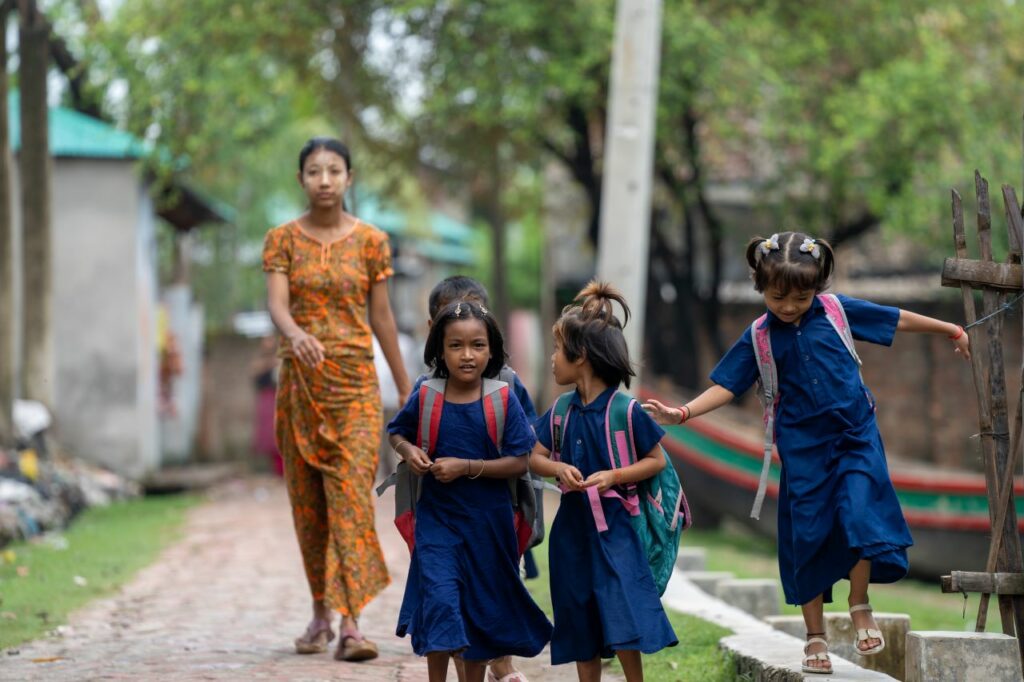In the community of Cox’s Bazar in Bangladesh, 21-year-old Useaking, a mother of two, can pinpoint the event that changed her life forever: getting her period.
“I used to have to stay home for days when I had my period,” says Useaking, whose information on menstruation came from myths and taboos. “I didn’t even know to use rags, let alone sanitary pads, so I couldn’t go out as people would see my bloodstained clothes.”
Staying home, in turn, affected her education. She fell behind in school.
As her studies slipped away, so did her options. Useaking was 15 when she dropped out of school, against her parents’ wishes, to marry a boy she’d met at Shangrai, a traditional water festival. She thought this would bring her the freedom she craved.
Alone in a new community, Useaking was expecting her first child by 16. Her second arrived 14 months later. “At the time, I didn’t know I could use the health services in my area. No one told me about this or was there to guide me,” she recalls, describing a situation in many parts of Bangladesh, where 22% of girls marry before the age of 15.
Useaking’s story took an unexpected turn when she discovered a community support group for young married women. Among new friends, she learned about sexual and reproductive health, mental health and gender-based violence. The more she learned about her rights and the importance of family planning, the more confident – and vocal – she became.
Determined to share her knowledge with any girl who would listen (including her younger sister), Useaking began speaking out against child marriage, using her life as an example. “[Girls who study and work] can live freely and go wherever they want,” she says. “But I cannot. If I had known, I might have made different choices.”

Given that the daughters of teenage mothers run a greater risk of becoming young mothers themselves, Useaking has a vested interest in breaking the cycle of intergenerational poverty that early marriage sets in motion: “I want my daughter to reach her full potential and enjoy her freedom, to have access to education and the opportunity to pursue her dreams.”
Useaking’s plan came together with the support of our LEAP (Lifting Health, Empowered and Protected Girls and Women in Cox’s Bazar) program. Its goal is to work with adolescent girls and young women living in host communities and refugee camps and help them advocate for their sexual and reproductive health and rights (SRHR). The central focus is helping to prevent child marriage and gender-based violence and improving access to information and health services.
This three-year program, which was launched in 2022, will reach 97,773 adolescent girls and boys (aged 10 to 24). Useaking is also one of the 2,100 participants in the young married women’s group. Trained as a LEAP female mentor, she now meets with adolescent girls and boys to help them understand and advocate for their SRHR. The LEAP project also offers training for service providers, women’s organizations and government agencies on advocating for and delivering SRHR services to adolescents and young women.